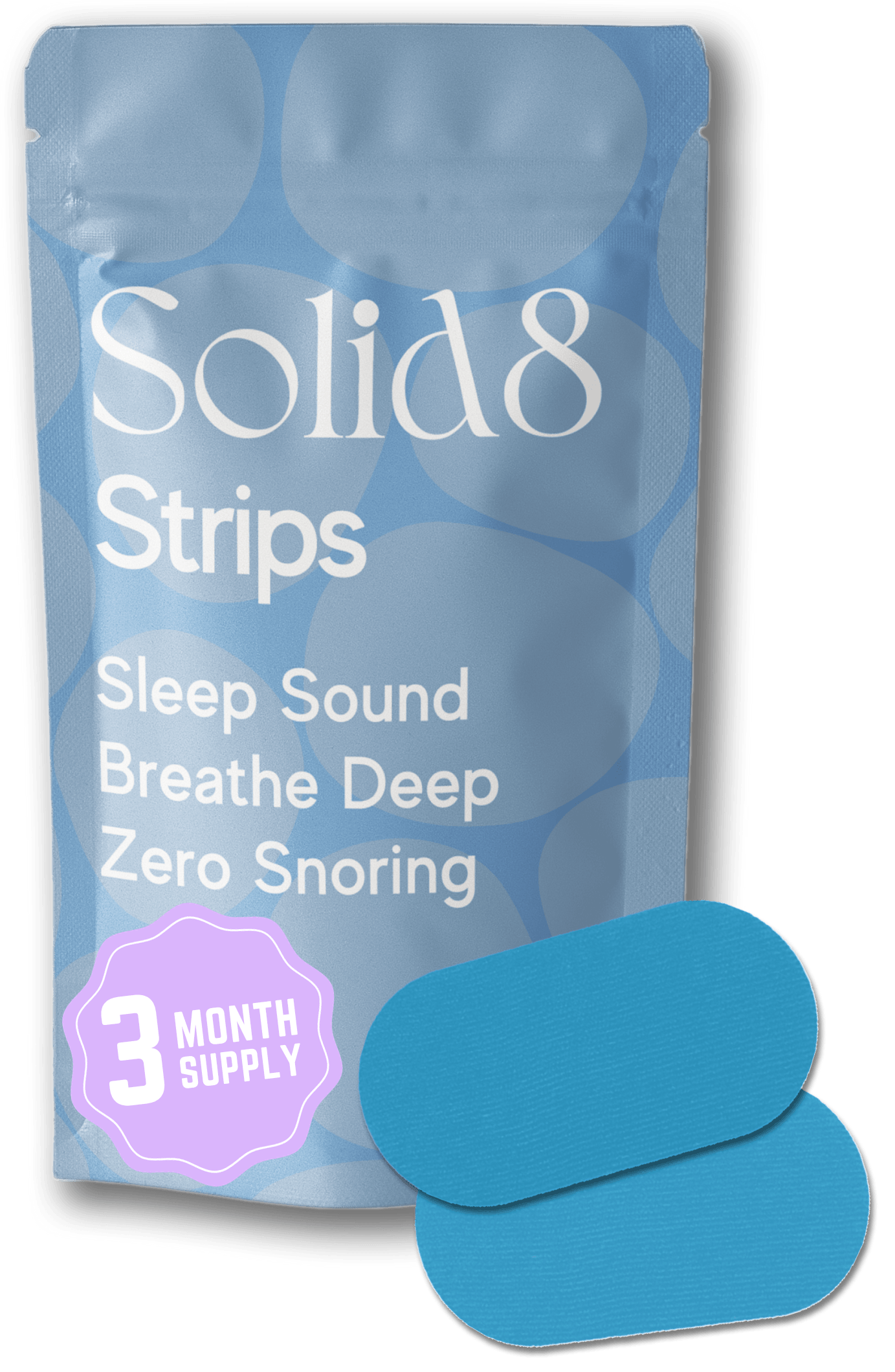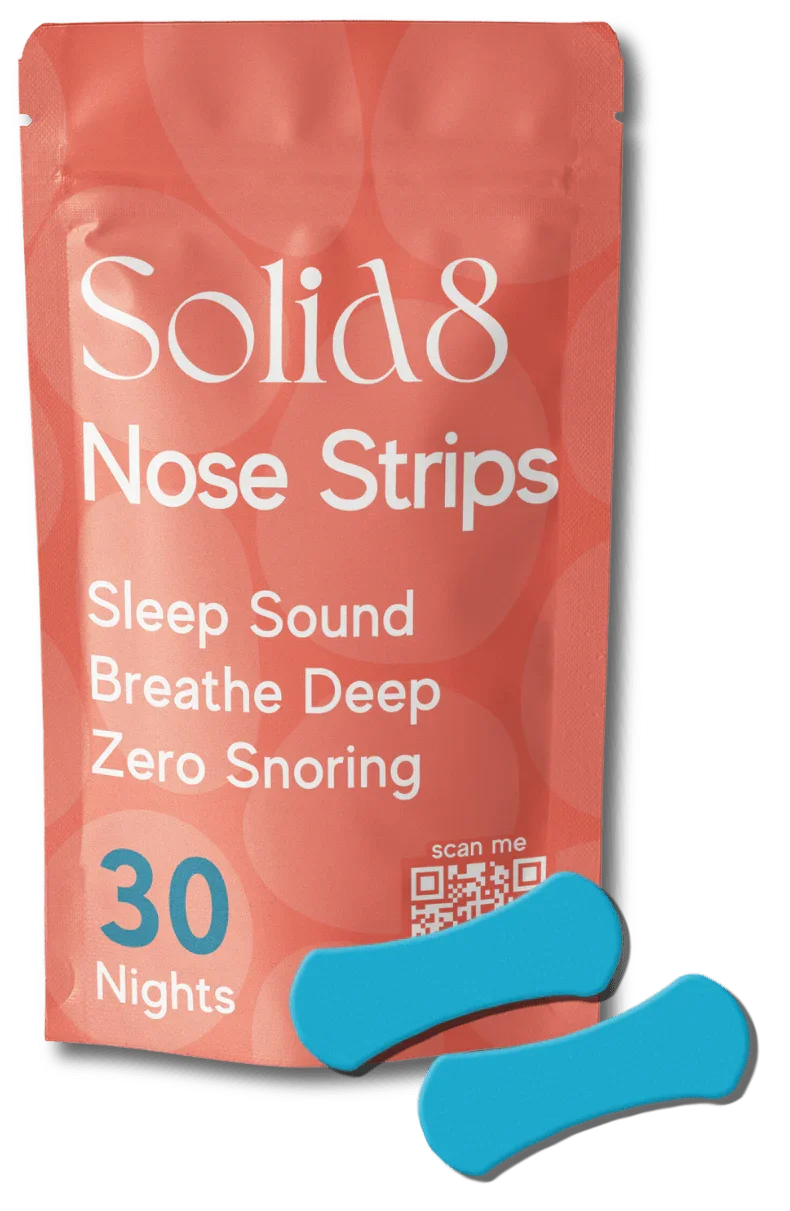
Read This Before Using Mouth Tape: Safety Tips
Share
Understanding Mouth Taping
Mouth taping is when people put tape over their mouths while sleeping to breathe through their nose instead of their mouth. Some people think it helps them sleep better and stop snoring. It's gotten pretty popular lately.
But is it safe? Let's look at what mouth taping is about and if you should try it. We'll cover why people do it, some concerns, and what experts say.
Mouth Taping Safety: Key Points
- Encourages nasal breathing during sleep
- Consult a doctor before trying
- Use appropriate tape designed for this purpose
- Learn proper application techniques
- May improve sleep quality and reduce snoring
- Not suitable for everyone, especially those with breathing difficulties
- Start with short trials to assess comfort and effectiveness
- Be aware of potential skin irritation
- Consider alternatives like nasal strips if unsure
- Monitor your experience and stop if any issues arise
Why People Try Mouth Taping
The main reason people try mouth taping is to breathe through their nose while sleeping. Some think it can help with:
1. Better sleep: They think nose breathing might help them sleep better.
2. Less snoring: Some hope it will reduce their snoring.
3. Healthier mouth: They think it might prevent dry mouth overnight.
4. Improved oxygen: Nose breathing might allow better oxygen uptake.
5. Reduced sleep apnea: It might help with mild sleep apnea cases.
6. Better oral health: It may lower the risk of tooth decay and gum disease.
Common Worries About Mouth Taping
Some people have concerns about mouth taping:
1. Safety during sleep: What if they need to breathe through their mouth suddenly?
2. Skin problems: The tape might irritate skin or cause allergic reactions.
3. Breathing difficulties: It might be hard to breathe if their nose gets stuffy.
4. Feeling uncomfortable: Some might feel anxious about having their mouth taped.
5. Dependency: People might rely on it too much for good sleep.
6. Other health issues: Mouth breathing could be a sign of other problems.
Clearing Up Myths About Mouth Taping
Let's clear up some common misunderstandings:
Myth 1: It's dangerous for everyone. Truth: Some people use it safely with a doctor's okay.
Myth 2: It causes suffocation. Truth: When used right, the tape shouldn't fully seal your mouth.
Myth 3: It's uncomfortable and ruins sleep. Truth: Many get used to it and find it comfy.
Myth 4: It fixes all sleep problems. Truth: It's not a cure-all and might not work for everyone.
Myth 5: Any tape works. Truth: Only use tape made for mouth taping to avoid skin damage.
Check out these essential facts about mouth taping for better sleepHow to Use Mouth Tape Safely
If you want to try mouth taping, here are some safety tips:
1. Choose the right tape: Use tape made for mouth taping, not regular tape.
2. Apply it correctly: Learn how to put it on properly.
3. Start slowly: Try it for short times first to see how you feel.
4. Clean your face: Make sure your skin is clean and dry before using the tape.
5. Test for allergies: Try the tape on your arm first to check for reactions.
6. Know how to remove it: Learn to take off the tape quickly if needed at night.
Solid8 Sleep's Safe Mouth Taping Options
Solid8 Sleep offers mouth tape designed to be safe and comfy:
1. It's made from skin-friendly materials.
2. The tape is flexible and moves with your face.
3. It's easy to put on and take off.
4. The material is breathable, allowing some airflow.
5. It leaves minimal residue on the skin.
6. It comes in different sizes for various mouth shapes.
When Not to Use Mouth Tape
Mouth taping isn't for everyone. Don't try it if:
1. You have health conditions that affect your breathing.
2. You often get stuffy noses or have trouble breathing through your nose.
3. You haven't talked to a doctor about it.
4. You have untreated sleep apnea.
5. You're taking medicines that cause nasal congestion.
6. You feel anxious about having your mouth covered while sleeping.
Explore alternatives to traditional mouth taping methodsOther Ways to Improve Your Sleep
If you're unsure about mouth taping, try these:
1. Nasal strips: These can help open your nose passages.
2. Better sleep habits: Like going to bed at the same time each night.
3. Nasal dilators: Devices that keep your nose passages open.
4. Humidifiers: Adding moisture to the air can help with nose breathing.
5. Changing sleep position: This might reduce mouth breathing.
Making the Right Choice for You
When it comes to mouth taping, safety is key. Remember:
1. Always talk to a doctor before trying it.
2. Use products made for mouth taping, like those from Solid8 Sleep.
3. Pay attention to how you feel and stop if you have any problems.
4. Keep a sleep diary to track changes in your sleep.
5. Be patient – it may take time to see results or get used to it.
6. Consider combining it with other good sleep habits for best results.
Mouth taping is an interesting idea that some find helpful, but it's not for everyone. Being careful is super important. If you're having trouble sleeping or breathing at night, talk to a doctor. They can help find out why and suggest the best solution. Good sleep is really important for your health, so it's worth finding a safe way to improve it that works for you.
Special Offer: Sleep Better for Less!
For a limited time, use code "RESTFUL" at checkout to enjoy 10% off your first order. Don't miss out on this exclusive deal!
So, why wait? Transition to Solid8 Mouth Tape today and step into a world of restful nights and vibrant mornings.
Experience the Solid8 difference today! Visit the store for a sleep transformation that you truly deserve.








